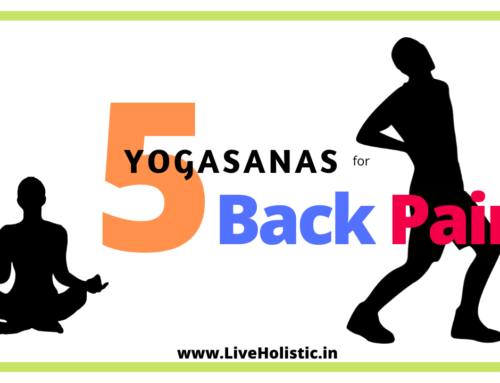Why Swastikasana Is Special ?
Janurvor antare samyak krtva padatale ubhe |
Rjukayah samasinah svastikam tat prachakshate ||
– (Hatha pradipika -1/19).
Placing both soles of the feet on the inner side of the thighs, sitting equipoised with a straight body. This is called swastikasana.
For many people in the industrialized world, sitting on a piece of furniture is the body position in which they spend most of their waking hours. In yoga practice, the hip, pelvic joints, and lower spine develop a new relationship with the earth when one bears weight directly on them in swastikasana.
The left foot is placed against the opposite inner thigh with the back of the heel to the right side of the genitals. The medial malleolus should be just to the right of the midline of the body. The lateral malleolus rest on the floor on the opposite side of the ankle. Though this is a steady sitting position, it affects the whole body. Prana Shakti is directed in a particular manner suitable for meditation. The nadis at the back of the legs are stimulated. The exact points of stimulation can be found by pressing along the acupuncture meridian. These nadis carry energy to the centers in the spinal column and the energy is distributed from here. The sciatic nerve is gently massaged in this posture, which influences the lumbar region. The abdominal muscles are also influenced and the inner body temperature is affected. The symbol of the swastika represents fertility, creativity, and auspiciousness. Thus, this asana induces the same capacity in the body.
This is a meditative posture which stretches the hips and the thighs. The asana balances the lower body alignment, as the right-knee and left knee come on the top, alternatively. This is a great posture to induce calmness and meditativeness.
The auspicious pose is the easiest pose because the feet cross one another in the midline of the body and end up in a natural and stable position planted against the opposite thighs. The adductors and pubofemoral ligaments are not stretched excessively, and the knees and hip joints are not placed under intense torque. Swastikasana helps to develop hip flexibility and to acclimate to torques and pressures on the ankles.
Benefits of Swastikasana:
- Meditation pose: Swatikasana is a good meditation pose. Especially for people who find it difficult to sit in, more classical poses like Padmasana and Siddhasana.
- Stretches the lower body: The hamstrings and glutes are stretches. This is a great stretch for runners.
- Spinal alignment: The spine is stretched which strengthens the back.
- Optimal organ functioning: As the torso is stretched, all the organs have the optimal place to function efficiently.
- Stimulates calmness: As our eyes are focused on the Trikuti (third eyes), calmness and clarity are induced.
Reference:







Hi! Would you mind if I share your blog with my myspace group? There’s a lot of folks that I think would really appreciate your content. Please let me know. Thanks
Yes of course.
You effectively used transitions to maintain viewers involved throughout the entire post.
You presented a well balanced view of the subject, allowing visitors to develop their very own viewpoint.
Your kindness as well as readiness to help has actually been a true blessing. We can’t thanks sufficient for your effort and also commitment.
Thanks for being an unbelievable colleague, advisor, as well as pal. Your steadfast commitment is greatly valued and also we can’t thank you sufficient for all that you do!
You have taken wonderful care in producing an organized and also navigable web site that is extremely practical.
You have actually constantly exceeded and also past what was asked of you. Your devotion and also commitment to excellence is motivating and we thanks for it!
Efficiency, health and wellness and well being, rest far better!
Start living your finest life now with the incredible!
You were able to successfully resolve the visitor’s questions in a clear and also succinct means.
Remarkable is an all-in-one time administration service that will certainly help you be much more efficient than ever before!
Incredible! This blog looks just like my old one! It’s on a completely different subject but it has pretty much the same layout and design. Superb choice of colors!
F*ckin’ remarkable issues here. I am very happy to peer your article. Thanks so much and i am looking ahead to touch you. Will you please drop me a mail?
I needed to post you that bit of remark to say thanks a lot over again over the stunning tactics you’ve provided above. It has been really seriously generous with people like you to present openly just what most people could have distributed as an ebook to help make some money on their own, precisely considering that you might have done it if you wanted. Those techniques as well acted to become fantastic way to realize that other people have a similar eagerness really like my personal own to realize significantly more when it comes to this problem. I’m certain there are many more fun moments in the future for individuals that read through your blog post.
Good web site! I truly love how it is simple on my eyes and the data are well written. I am wondering how I might be notified when a new post has been made. I have subscribed to your RSS feed which must do the trick! Have a nice day!
I’m typically to running a blog and i really appreciate your content. The article has actually peaks my interest. I am going to bookmark your web site and maintain checking for brand spanking new information.
You successfully made use of personal anecdotes to show your points in a relatable manner.
Amazingness can help you finally obtain organized and also be much more productive. Say goodbye to stress and also hello there to a far better life.
You have actually always been there for us when we required it most. Your kind words and thoughtful motions have been a true blessing to us all. Thanks!
I liked as much as you will obtain carried out proper here. The cartoon is attractive, your authored material stylish. however, you command get got an shakiness over that you would like be turning in the following. sick indubitably come further in the past once more since precisely the same nearly a lot incessantly within case you protect this hike.
Great weblog right here! Additionally your web site a lot up very fast! What web host are you the usage of? Can I am getting your affiliate link for your host? I want my site loaded up as quickly as yours lol
Aw, this was a really nice post. Finding the time and actual effort to generate a very good article… but what can I say… I procrastinate a whole lot and don’t seem to get nearly anything done.
Your site is attentively built, making it exceptionally handy for viewers.
After study a few of the blog posts in your website now, and I truly like your approach of blogging. I bookmarked it to my bookmark web site record and can be checking back soon. Pls check out my site as effectively and let me know what you think.
I as well as my buddies have already been reading the excellent suggestions on your web page while all of a sudden I got a horrible suspicion I never expressed respect to you for those techniques. All of the women had been totally passionate to learn all of them and now have undoubtedly been enjoying these things. Thanks for truly being very kind as well as for selecting this kind of useful resources millions of individuals are really wanting to know about. Our own sincere apologies for not expressing appreciation to earlier.
We are a group of volunteers and starting a new scheme in our community. Your website provided us with valuable info to work on. You’ve done a formidable job and our whole community will be thankful to you.
Hello, i think that i saw you visited my blog so i came to “return the favor”.I’m attempting to find things to enhance my web site!I suppose its ok to use a few of your ideas!!
whoah this blog is fantastic i love reading your articles. Keep up the great work! You know, lots of people are searching around for this info, you could aid them greatly.
I could not resist commenting. Well written!